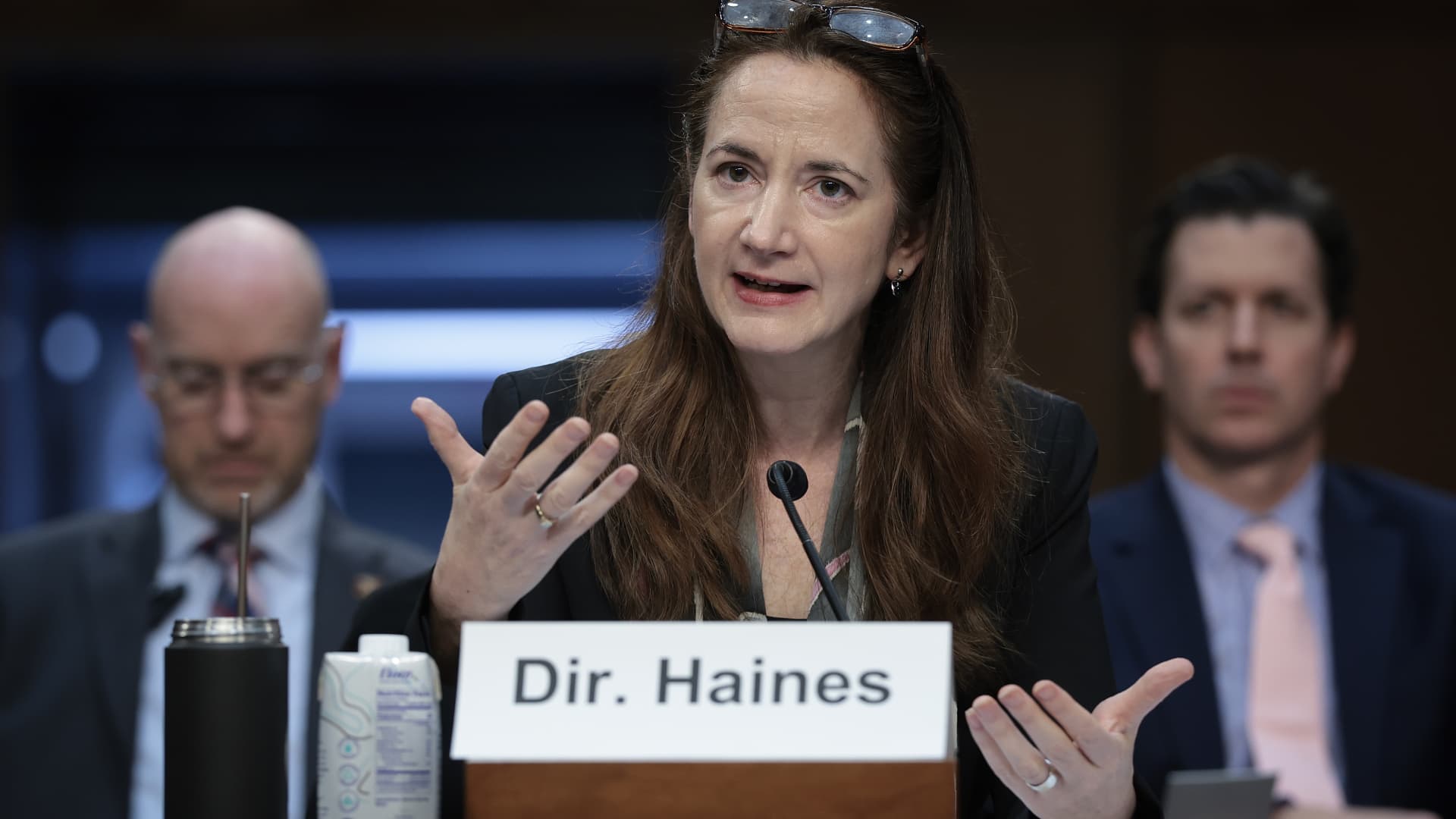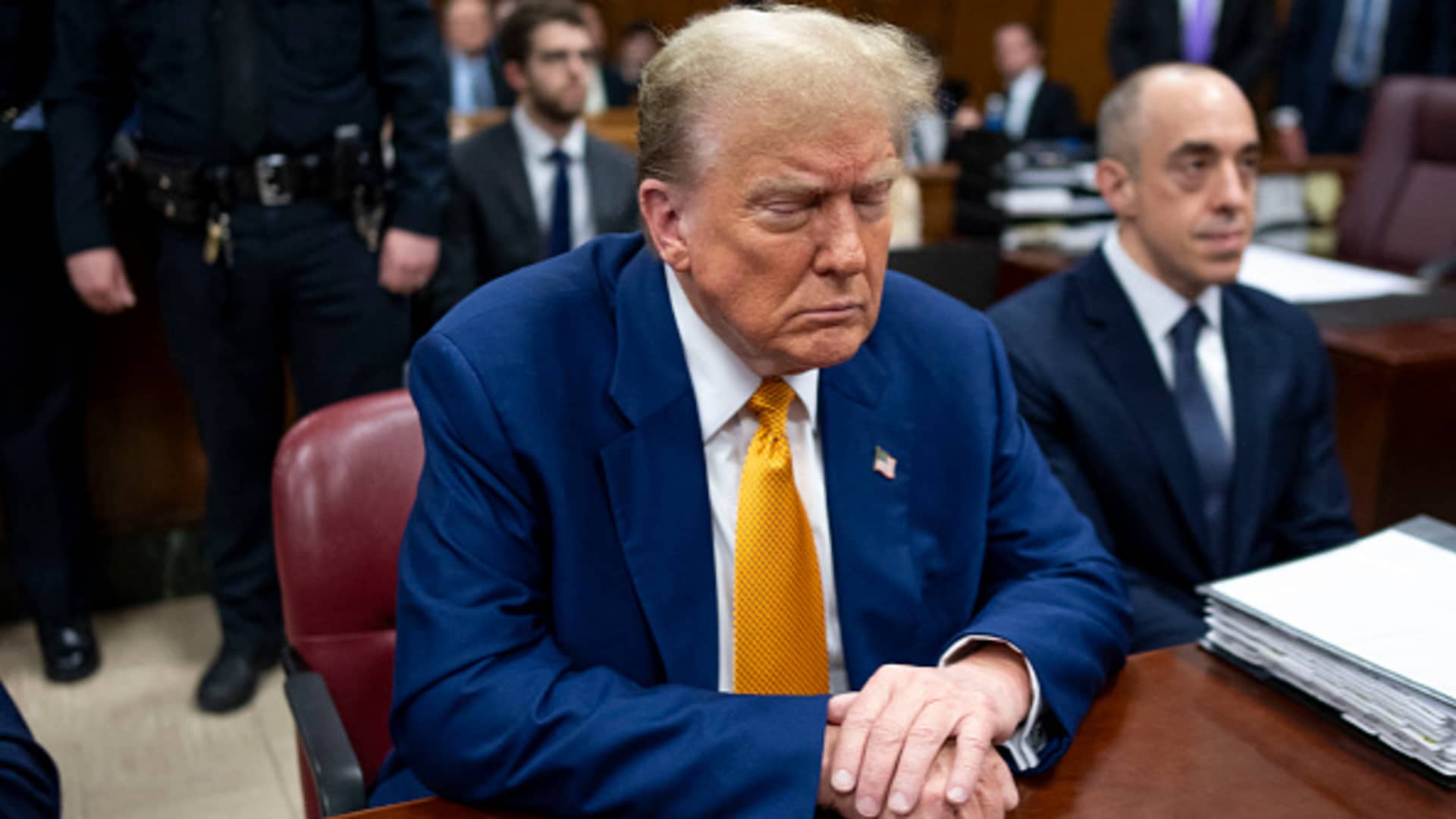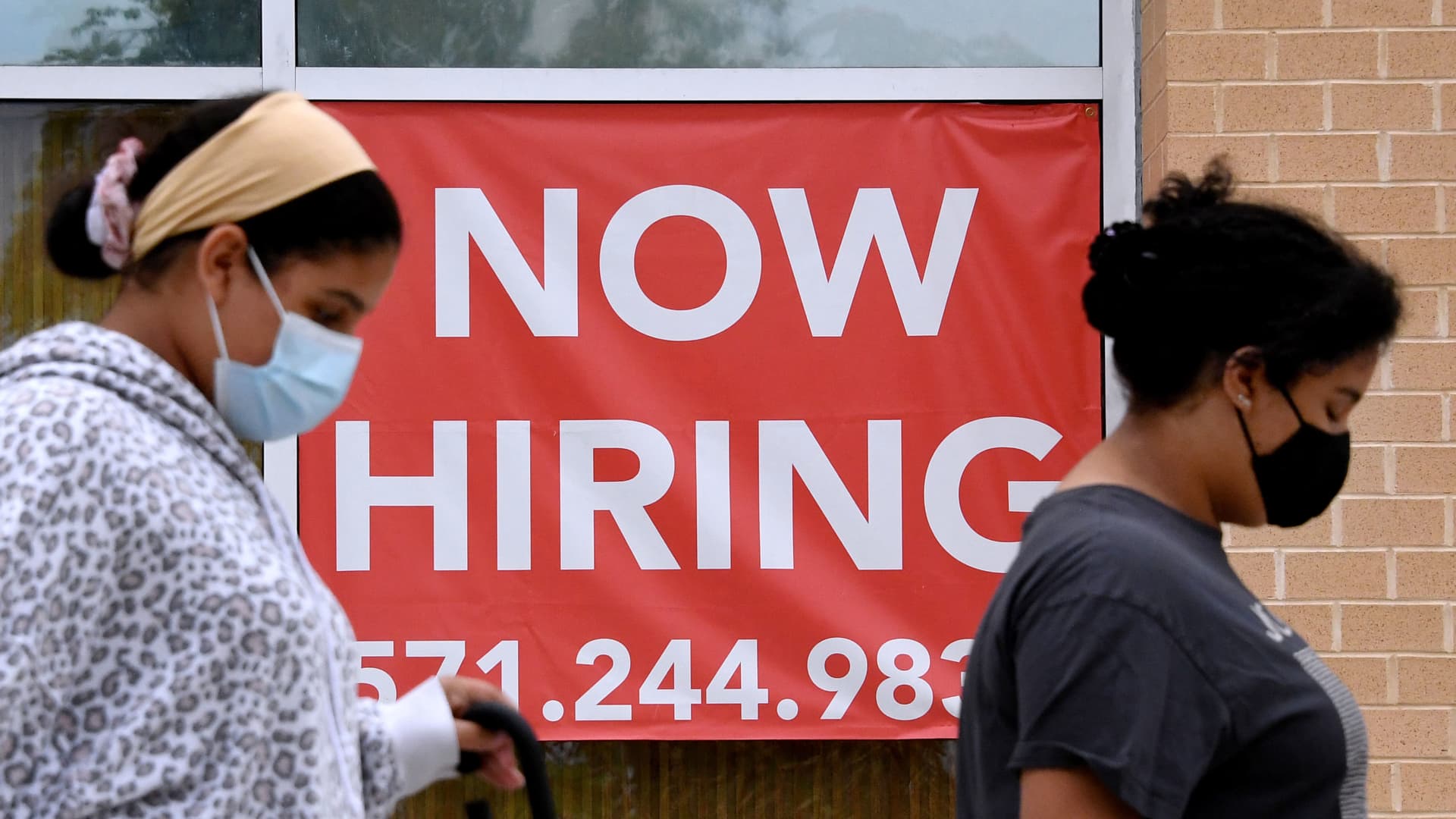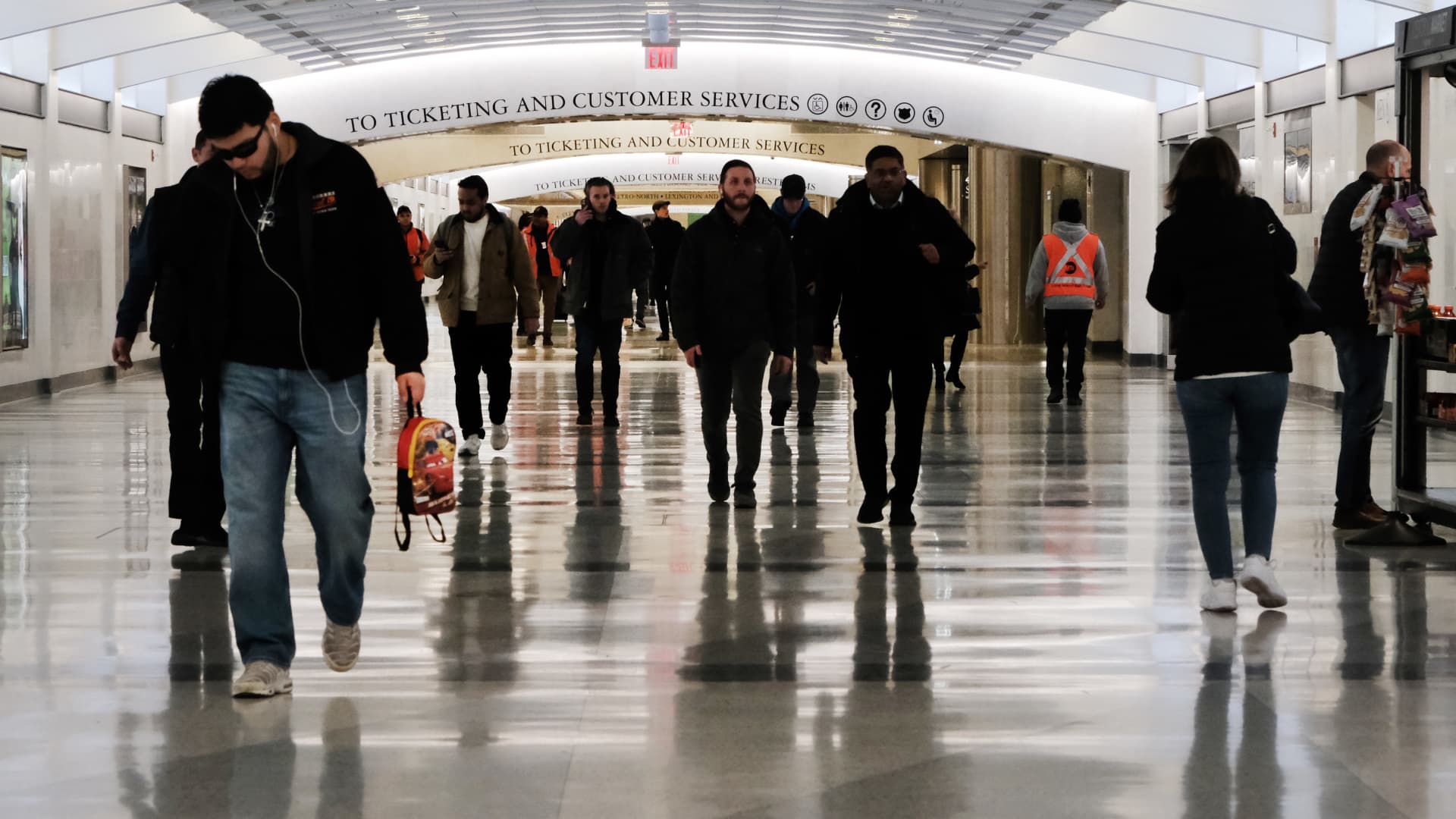Federal Reserve Chairman Jerome Powell arrives to testify at a House Financial Services Committee hearing on the “Federal Reserve’s Semi-Annual Monetary Policy Report” on Capitol Hill in Washington, DC, March 6, 2024.
Almond Ngan | Afp | Getty Images
With the economy doing well and the stock market holding up quite well despite the recent turmoil and twists and turns, it is difficult to say that higher interest rates will have a significant negative impact on the economy.
So what if policymakers simply decide to leave interest rates where they are for longer and ride out all of 2024 without a cut?
It’s a question that, despite current conditions, is making Wall Street shudder and Main Street uneasy, too.
“If interest rates go up, there has to be an adjustment,” said Quincy Krosby, chief global strategist at LPL Financial. “The calculus has changed. So the question is: will we have problems if interest rates stay high for longer?”
Going into 2024, investors did not expect inflation to last longer, but they are having to deal with it now as inflation has proven more stubborn than expected, hovering around 3%, compared to the 2% target Federal Reserve.
Recent comments from Fed Chair Jerome Powell and other policymakers have reinforced the belief that there will be no rate cuts in the next few months. In fact, there has even been talk of the possibility of another rate hike or two if inflation doesn’t continue to ease.
That raises big questions about when exactly monetary easing will occur and what impact the central bank’s continued stance will have on both financial markets and the broader economy.
Krosby said some of those answers will come soon as the current earnings season gains momentum. Company leaders will reveal key details beyond sales and profits, including the impact of interest rates on profit margins and consumer behavior.
“If you feel like businesses need to start cutting costs and that creates difficulties in the labor market, then with interest rates this high, that’s a path to a potential problem,” Krosby said.
But financial markets have largely held up amid higher interest rates despite the S&P 500’s recent 5.5% sell-off. The broad-market large-cap index is still up 6.3% year to date despite the Fed’s hold and is 23% above the late October 2023 low.
Higher interest rates can be a good sign
History tells different stories about the consequences of a restrictive Fed, both on markets and on the economy.
Higher interest rates are generally a good thing as long as they are linked to growth. The last time that wasn’t true was when then-Fed Chairman Paul Volcker curbed inflation with aggressive interest rate hikes that ultimately and deliberately pushed the economy into recession.
There is little precedent for the Fed to cut interest rates during periods of robust growth like the current one. Gross domestic product is expected to grow 2.4% on an annual basis in the first quarter of 2024, which would mark the seventh consecutive quarter of growth above 2%. Preliminary GDP figures for the first quarter are due to be published on Thursday.
At least in the 20th century, it is hard to argue that high interest rates led to recessions.
On the contrary, Fed leaders are often blamed for keeping interest rates too low for too long, leading to the dot-com bubble and the subprime market collapse that triggered two of the three recessions of this century. In the other case, the Fed’s key interest rate was just 1% at the time of the Covid-induced downturn.
In fact, there are arguments that there is too much emphasis on Fed policy and its broader impact on the $27.4 trillion U.S. economy.
“I don’t think active monetary policy really moves the economy as much as the Federal Reserve thinks,” said David Kelly, chief global strategist at JP Morgan Asset Management.
Kelly points out that in the 11 years between the financial crisis and the Covid pandemic, the Fed tried to use monetary policy to boost inflation to 2% and largely failed. Last year, the decline in inflation coincided with tighter monetary policy, but Kelly doubts the Fed had much to do with it.
Other economists make a similar argument, namely that the main issue affecting monetary policy – demand – has remained robust, while the supply issue, largely beyond the reach of interest rates, has been the main reason inflation has slowed.
Kelly said interest rates are important in financial markets, which in turn can impact the state of the economy.
“Interest rates that are too high or too low distort the financial markets. This ultimately undermines the productive capacity of the economy in the long term and can lead to bubbles that destabilize the economy,” he said.
“I don’t think they set interest rates at the wrong level for the economy,” he added. “I believe that interest rates are too high for the financial markets and they should try to return to a normal level – not a low level, but a normal level – and keep them there.”
Higher and longer is the likely path
For policy reasons, Kelly said, this would result in rate cuts of three-quarters of a percentage point this year and next, bringing the key interest rate down to a range of 3.75% to 4%. That’s roughly in line with the 3.9% rate at the end of 2025 that Federal Open Market Committee members quoted last month as part of their “dot plot” forecasts.
Futures market prices imply a Fed Funds rate of 4.32% through December 2025, indicating a higher rate.
While Kelly advocates for a “gradual normalization of policy,” he believes the economy and markets can withstand sustained higher interest rates.
In fact, he believes the Fed’s current forecast of a “neutral” interest rate of 2.6% is unrealistic, an idea that is gaining traction on Wall Street. Goldman Sachs, for example, recently suggested that the neutral interest rate – neither stimulative nor restrictive – could be as high as 3.5%. Cleveland Fed President Loretta Mester also recently said it was possible the long-term neutral rate would be higher.
That suggests that Fed policy will lower interest rates somewhat, but will not return to the near-zero interest rates that prevailed in the years following the financial crisis.
In fact, the fed funds rate has averaged 4.6% over the long term since 1954, even considering that federal funds rates were near zero for seven years after the crisis from 2008 to 2015.
Problems with government spending
What has changed dramatically over the decades, however, is the state of public finances.
The $34.6 trillion national debt has exploded since the outbreak of the coronavirus crisis in March 2020, increasing by almost 50%. The federal government is on track to run a $2 trillion budget deficit in fiscal year 2024, with net interest payments expected to exceed $800 billion thanks to these higher rates.
The deficit to GDP was 6.2% in 2023; In comparison, the European Union only grants its members 3%.
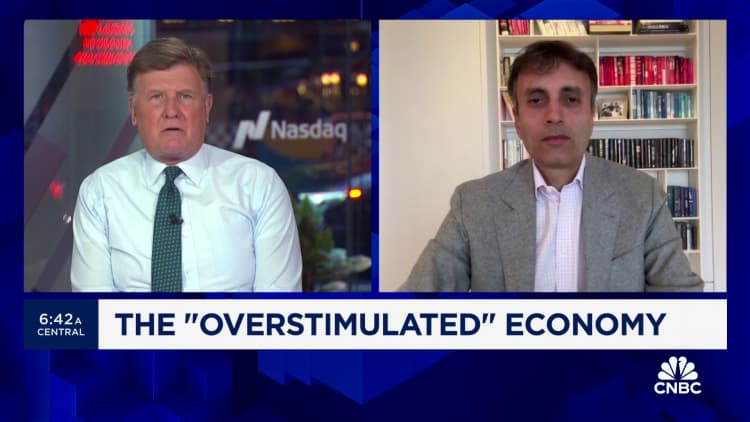
The fiscal largesse has boosted the economy enough to make the Fed’s higher interest rates less noticeable, a situation that could change in the coming days if interest rates remain high, said Troy Ludtka, senior U.S. economist at SMBC Nikko Securities America.
“One of the reasons we haven’t noticed this tightening of monetary policy is simply a reflection of the fact that the U.S. government is pursuing the most irresponsible fiscal policy in a generation,” Ludtka said. “We’re running massive deficits in a full-employment economy, and that’s really keeping things going.”
However, higher tariffs are starting to take their toll on consumers, even as sales remain solid.
According to the Fed, credit card delinquency rates rose to 3.1% at the end of 2023, the highest level in 12 years. Ludtka said the higher rates would likely result in a “cut” for consumers and ultimately a “cliff effect” where the Fed would eventually have to give in and cut rates.
“So I don’t think they should lower at any point in the near future. But at some point it has to happen because these interest rates are simply crushing particularly low-income Americans,” he said. “That’s a large portion of the population.”
Don’t miss these exclusives from CNBC PRO
Source link
2024-04-24 17:26:07
www.cnbc.com


